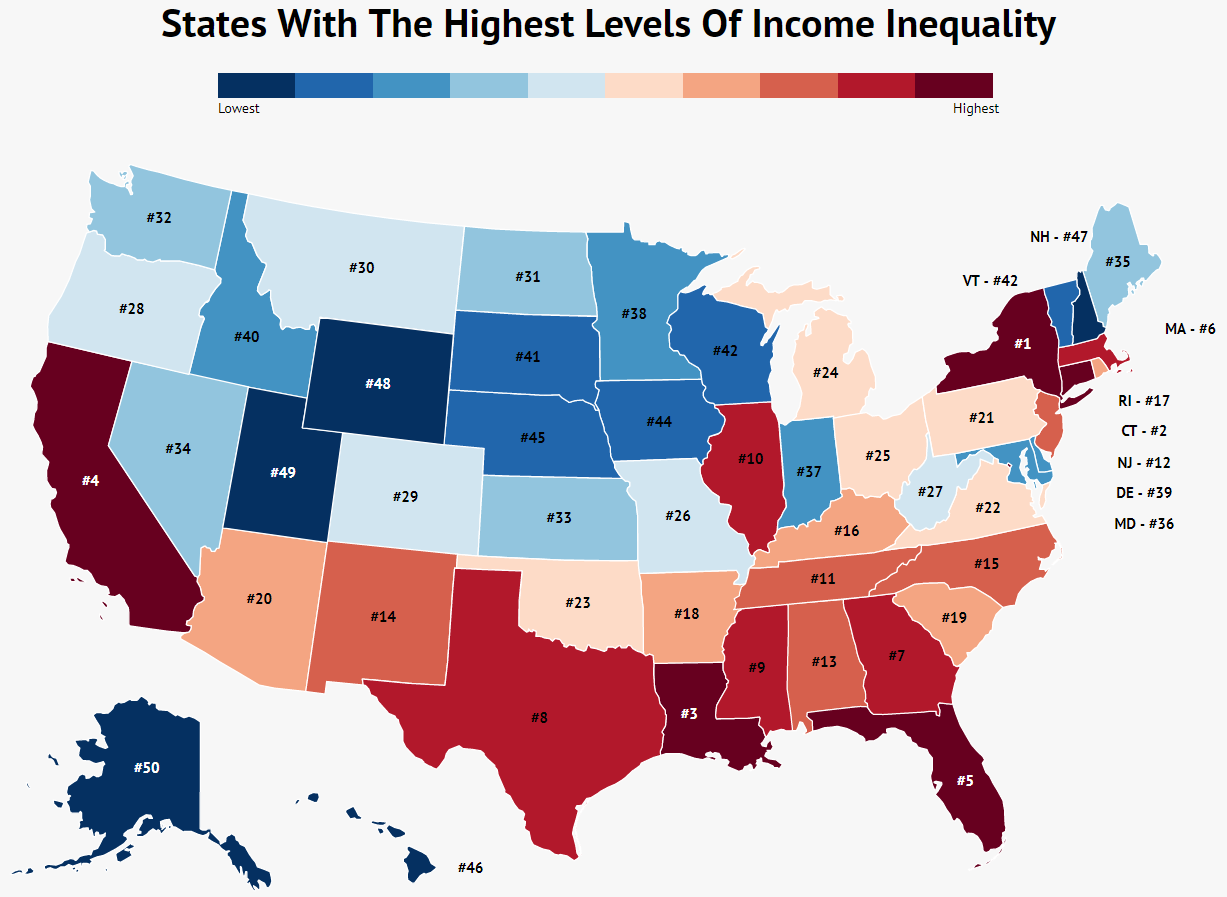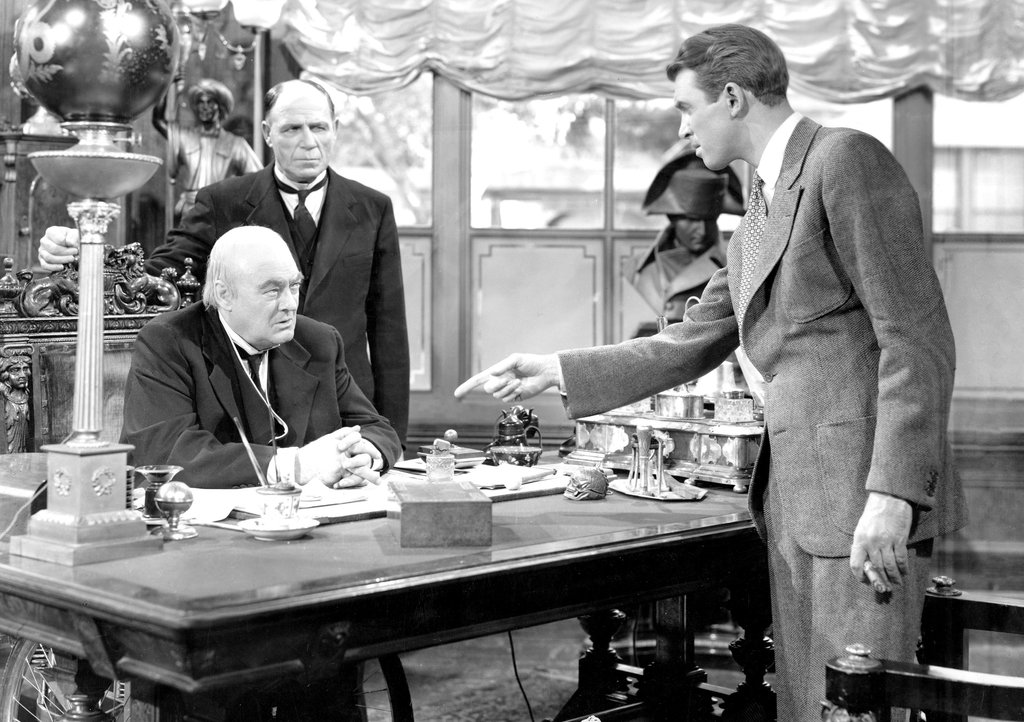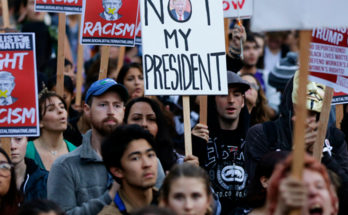To be attacked on social media, select from any number of topics proven to rile up self-appointed watchdogs earning strength points from hyperbolic displays of righteous indignation. Tell the world you’re enjoying your new seal pup shoes or that you voted for Trump, or that you voted for Trump while wearing your new seal pup shoes. Even if a lark, you’ll have five hundred baristas labeling you a patriarchy lieutenant. It’s a default setting. I didn’t vote for Trump and I’m derided as a Trump voter ten times a day. I praised the Warriors NBA victory and I was told I have white privilege. The digital diaspora of broken souls will torture logic until it breaks.
Among the less obvious reflexive-outrage topics these days is the condition of the State of California. The importance of the topic is by no means limited to the citizenry. California is not only the largest and most prominent state in the nation, it’s the leading bastion of progressive political control. California’s condition is linked inexorably to a partisan report card. The condition of California has become a national issue as fervently debated as gun control or abortion. A predominance of Golden State defenders are coming from outside the state borders. For an interesting late night conversation, be a long-time Californian arguing with somebody from Maryland about the condition of your own state. You do hair in Hagerstown; how did you become an expert in the economics of a state nineteen states to your west? It’s a minefield of arguments bereft of facts.
The most common refrain of those denying the anecdotally obvious decay of California is that California is now the world’s fifth largest economy as measured by GDP. It used to be seventh. Kudos to Great Britain and France for faltering so. At $2.7 trillion in economic output annually, California is a powerhouse. It represents 1/7 of the entire GDP of the United States. Less mentioned, California represents 1/8 of the country’s total population. Therefore, as a matter of per capita GDP, California is only eighth in the nation, behind such states as North Dakota. You don’t hear that fact often. Certainly California is far better off the Mississippi down in the economic cellar, but behind North Dakota? Shoutout to the Peace Garden State (yes, I had to look that up North Dakota’s nickname).
By nominal or relative measurement, California is producing aplenty. Top ten isn’t too shabby. It would seem to counter growing concern that this West Coast nirvana is held together by Bondo® and a slick public relations campaign. But those gross achievement figures refer to the collective California; the collective California is locked and loaded (not a gun reference, it’s a gun control state). It’s the individual Californian, or the bulk of them, that presents serious ill symptoms of what you might call, The Zuckerberg Effect.
The median (most common) net worth of an American household is around $45,000. That’s not altogether so groovy compared to other industrialized Western nations. Mind you, the average net worth is closer to $70,000, though due to fairly severe disparity of income distribution, the majority of households fall well below the average. Let’s say you have a town of 50,000 median households, each with a net worth of $45,000. Not a poor town, certainly not a rich town, but the statistically most common net worth town in the nation. For whatever reason, Mark Zuckerberg moves Priscilla and the two immaculately conceived children to town to prove he’s a man of the people. He lays down roots in a modest 2BR, 2BA midcentury ranch house. Mark Zuckerberg’s net worth is roughly $75 billion, depending on Facebook stock prices on any given day. Common Town USA’s median household net worth didn’t move but a tick, but its mean or average net worth just climbed to over $1.5 million. Congratulations, Sue and Steve down the block wondering if you can make the next mortgage payment or afford braces for your kid with the gruesome canines, you’re officially living in one of the richest towns in America. Problems solved. Minus the white privilege slams, of course.
California has the most billionaires in the country; it’s fast approaching the rather awesome achievement of one million millionaires. At the same time, California now officially leads the nation in poverty, as measured by the U.S. Census Bureau, when adjusted for cost of basic living expenses:
…just over 20 percent of Californians are living in poverty. The Public Policy Institute of California has devised its own measure, similar to the Census Bureau’s, that not only validates the 20 percent figure, but tells us that another 20 percent of Californians are in “near-poverty,” which means they struggle to pay for food, shelter and other necessities of life.
While certain regions of California and certain sectors of industry are raking in cash, most notably the real estate market along the coasts and the tech sector centered in the Northern California Bay Area, one-third of California residents qualified for MediCal, providing healthcare for the poor. By way of quick comparative summation, California has the most billionaires, most millionaires, and the most poor, most near-poor, and highest percentage on government provided healthcare. The state is fast approaching a 50% rate of non-English speaking households, with a plurality of Hispanic citizens, which if nothing else, leads to tremendous practical social and communication problems. California also now leads the country in homeless population, accounting for a quarter of the nation’s total half-million estimated homeless. This summation is all called dichotomy. Dichotomies are verboten in political discussions.
(It should be noted that the swells of homeless in the State are not the same population set as the Hispanic immigrants, more so a native born, mentally ill, drug addicted, drifter population heavily imported from other states. California, most especially the San Francisco and Los Angeles areas, provide the combination of weather, public services, drug availability, and loitering tolerance that lures in the indigent population. California laws allowing for drug possession, treatment over imprisonment for drug related crimes, and recent changes to the penal code that practically decriminalize petty theft, contribute to the effect. Various regions of the State are now flooded with both licensed and unlicensed pop-up rehab centers that take in patients from around the country until the insurance money runs dry, wherein they are released onto the streets.)
Income disparity was a key ranting point at Bernie Sanders rallies during the 2016 Presidential election cycle, and occasionally mentioned by the Clinton campaign when that shrunken apple headed force of nature was cornered for a comment. The actual existence of such dramatic disparity provides the rationale for how Bernie Sanders nearly beat a rather well funded and well-established Hillary Clinton in the California Democratic Primary.
The dramatic wealth distribution disparity is the pressing economic issue of the State. It’s reflected heavily in, and reinforced by, the fact that working class people are leaving the State while professionals with higher income jobs are moving in (with more leaving than coming). This issue that remains almost entirely unaddressed by anybody in a position of power. And not so ironically, it’s an issue oft-rallied against by the very the political party that controls all levers of power in the State. That Democratic condemnation is definitely not meant to give any praise to the California Republicans. Never has a more unintelligent, unambitious, and unprincipled political group been assembled. If Ronald Reagan were alive today to see California Republicans, he’d die again from embarrassment. I can’t do another Reagan funeral.
The massive imbalance in income in California is reflected statistically in the Gini coefficient. If you dig economics, follow that link. Suffice it to say, it’s the standardly recognized index for the uneven distribution of cash money within a nation or state. There’s been much ado about the Gini index of the U.S. compared to other industrialized and social-democratic nations, and how income disparity is ever growing in this nation. Whatever the issue for the nation at large, California is several degrees of standard deviation more dramatically skewed on the charts.

This map shows each U.S. state ranked by Gini coefficient. Dark brown is really bad, provided you deem having a small number of super wealthy people and a massive number of economically struggling people side by side to be a recipe for really contentious block party BBQ’s. California is fourth in the nation in income disparity and climbing. Right alongside New York which bears a striking resemblance in the growing chasm between those well-to-do in the Finance and Tech and Real Estate sectors, and the large scale inflow of predominantly immigrant populations to make the ship run below decks.
Any visit to a reasonably nice neighborhood in California will provide a glimpse into the Two Rushes Hours common in the State. The first, the professional class commuting to work from their urban-suburban enclaves, and the second, about an hour later, the swath of almost entirely Central American unskilled and low-skilled laborers who arrive to perform the menial tasks. The gardening, landscaping, construction, housekeeping, cooks, childcare, home nursing and other positions that come by pickup truck or bus or foot to serve those communities. A Google executive might have twenty to thirty unofficial low wage employees tending to his or her castle during the week. The less affluent upper middle class, perhaps three to four weekly visitors. They come in droves, an ingress of largely undocumented workers providing a secondary traffic jam of much less refined transportation in numerous well-heeled zip codes.
Additional such immigrant workers toil in agriculture providing the organic kale for Whole Foods outlets, bussing the tables at vegan chic restaurants, and turning down the sheets at the hotels where Harvey Weinstein took great liberties with the monogrammed robes. This isn’t a Cesar Chavez ghostly cry for La Raza revolution; this is merely a fact of life in California. And underlying that fact, a rather sinister duplicity from those at the top.

Mr. Potter wasn’t particularly deceptive about his plans to take over Bedford Falls, one Depression era victim at a time. The elites of California are coming at you with zils upon their fingers and Kumbaya upon their mouths. It is a grand lip service. Endless governmental fundraising to support the imported legions of working poor, income taxes paid almost entirely by the top one-percent who begrudge but can practically afford such payments, and sloughs of consumption, utilities, and use taxes that affect those at the bottom end of the scale in dramatic and skewed fashion. A recent push to raise the gas and car taxes an average of another $600+ on each California family, on top of the nation’s already leading gas taxes and high regional gas prices, has been met with near revolutionary response. Almost as if the proponents don’t understand that $600 represents a serious amount of money for many households. Is there really that much disconnect? You try living on an Apple CEO salary and see if you can be bothered with minute rounding errors on your expenses like $600 in new gas taxes. Your water bill is $20,000 a month.
Can you picture a Life Magazine photo of the working poor wherein nobody can afford smokes?
The cost of the working-poor immigrant population (regardless of legal status, as California nary recognizes such either way) is the subsidization of the essentials to maintain this population. Notably, this would include high enrollments in state and federal sponsored healthcare, as well as the systemic drag on education. Nearly 60% of students in California’s public schools are either still learning English or below the poverty line, or both. That puts a tremendous cost, both administrative and financial, on the school system, causing entire districts of schools to become dysfunctional, unable to provide basic achievement for the student body. Add this to the pressure on emergency rooms and clinics, welfare programs, roads and other infrastructure from the import of millions of low skilled, low education laborers from third world nations. It’s like that small party you threw in high school and fifty extra kids heard about it and showed up. Suddenly six kids are pissing in your hedgerow and somebody just cracked your mom’s Lladro. Make no mistake about it, this labor migration is an intentional import, by both commission and overt omission, by beneficiaries from both sides of the aisle.
The beneficiaries of this system aren’t as meaningful to note as those decidedly disadvantaged. It’s not the affluent that can afford private or well-off-parent-subsidized public schools for their children, who retain private security patrols to account for the stretched public police forces, and who may live in gated communities or under the auspices of vigilant Homeowners Associations measuring hedges and scoping for people of color. (While these high-income individuals in California pay the single highest tax rates in the nation, the nominal amount of the taxation doesn’t impact their practical lives in the same manner as consumption taxes and fees might somebody with very little income.) The burden clearly falls on those who struggle to figure out how to afford a new tire when their Goodyear blows out from the pot-hole littered roads, or how to rebuild after a mudslide in a poorly maintained foothill, or what to do about grandma when the decrepit dam threatens to break, or how to educate their kids in schools rife with gang violence and a four percent pass rate on standardized grade level tests.
The large numbers of newly arrived in California may be under the yoke of a thinly veiled indentured servant system, but trust that where they came from is far worse, else they’d not have risked so much to arrive. This isn’t exactly the Transatlantic Slave Trade. Central American migrants are risking treacherous conditions to arrive on these lands. The argument over whether this population gives or takes on a collective bottom-line is fairly moot, as it’s quite clear that the predominant recipient of their asset side of the balance sheet is a relatively small number of individuals. Don’t buy the oft-slung argument that everybody benefits from cheaper lettuce. Lettuce sucks. Nobody yearns for lettuce. If lettuce went away tomorrow, you’d be fine. On the other hand, gasoline is amazingly beloved and no amount of imported foreign labor into the State keeps it from being close to the nations most expensive. “Cheaper lettuce and more expensive gas” will never catch on as a rallying cry among the middle class.
If you need assistance with logical deduction, understand that it’s the middle and working class that bears the brunt of a state with a heavily bid-up cost of housing and essentials, the burden of a myriad of fees and taxes and regulations that stifle small business, and the depression of semi-skilled labor wages due to the influx of nearly limitless pools of cheap labor from which the existing working class receives no real counter benefit. Very different than the guy who owns the hotel or restaurant or corporate farm or sweet Pebble Tec pool with built-in grill. They certainly have a better year when the cost of their labor drops by thirty percent and they can shift healthcare costs to the community chest, even if they can only share three or four words with their new employees around the water cooler. Love that soccer. Goal!
Oil producing OPEC nations have relatively small, relatively rich populations. With everybody either directly or loosely directly connected to oil money, there’s nobody to do the menial and low skilled, low-paying jobs. Thus, these nations import large numbers of laborers from struggling Asian nations to be their grunt workforce.
In 1970, a few thousand Arabs lived in the sand nation of Qatar. Today, 2.7 million live in the small country loaded with super cool skyscrapers and beach resorts. It’s mostly the same small number of Arabs, now super wealthy, and a massive influx of imported laborers from Nepal, India, and Pakistan. 88% of the population is such. According to vitally important documentaries and VICE news stories, these foreign workers are not treated particularly well. Colonial style conditions in Qatar have become so egregious, they were awarded the 2022 World Cup by FIFA. Congratulations, you’re officially a repugnant nation.
Qatar is the model toward which California is hurtling, though hurtling bumpily since the roads in California are so badly crumbling compared to Qatar. I was going to mention the country of Panem from the Hunger Games, but that seemed incredibly nerdy. The core idea is the same. The Capitol has the lavish parties; the other Districts have beans again for dinner, if they’re lucky. Only one of us has a bullet train, though California is deep into a 90 billion dollar train that occasionally will move sort of fast for rides between two sparsely populated central farm towns.

Blame for the true state of the State of California is not on those flooding in from the South; these are mere pawns seeking a first world minimum wage to feed their families. That cliché about how you would do the same if in the same position is about as honest as clichés come. Nor should blame go to the college kid who invented Snapchat so teenage girls could be peer pressured into showing off their breasts to the boys at school. There’s some utility in that technology for some large number of people, though obviously not the girl. Snapchat inventor’s reward — a big house, nice cars, and sex with Miranda Kerr. That’s capitalism. It’s why California is the fifth largest economy in the world. That doesn’t happen by way of government program.
It’s time to blame the crass and deceptive. The partisan hacks, the paid off politicians, the ends justify the means duplicitous types in government and large corporate boardrooms. These individuals are neither for egalitarianism or open competition. They’re neither socialists nor laissez-faire marketeers. They’re rigged system fans in it for themselves, either financially, politically, or some weird obsession with historical guilt they’re working out with their therapist. Mississippi may have the legacy of the plantation, but now they’re all evenly poor. California has the rich and the poor, and those neither fish or fowl are figuring out ways to leave the State.
It’s the nature of our grand democratic capitalist experiment to have a wide array of individual outcomes and achievement. Though nobody publicly demands a Qatari type socio-economic and demographic composition. Even as we move toward it. The Governor, legislature, Silicon Valley chieftains, real estate magnates, Hollywood elite, powerful public employee unions, the Catholic Church, and that woman from Maryland — all routinely and roundly decry the disenfranchisement of the have-nots. Yet they have come together in a Burning Man virtue circle to create a State that has created more have-nots than any other, masked crudely by immensely wealthy outliers. I hate re-using the word ironic, so let’s switch to sad.
Sunshine is the greatest disinfectant. We have tons of that still in California, even if there are no more plastic straws. The truth is the jumping off point for improvement. My trainer told me that when I refused to take a BMI test. Let’s discontinue the fable that California is the model of anything. If Google, Apple, and Facebook pick up their faux leather satchels and slender laptops and leave, we wake up to a California looking like Pamela Anderson in the morning before hair and makeup. Don’t get lost in the big new silicone breasts. It’s a trap. California is rich. Californians not so much. Share the story, dear readers. Like the Feral Kid in Road Warrior. Maybe things will get better.




